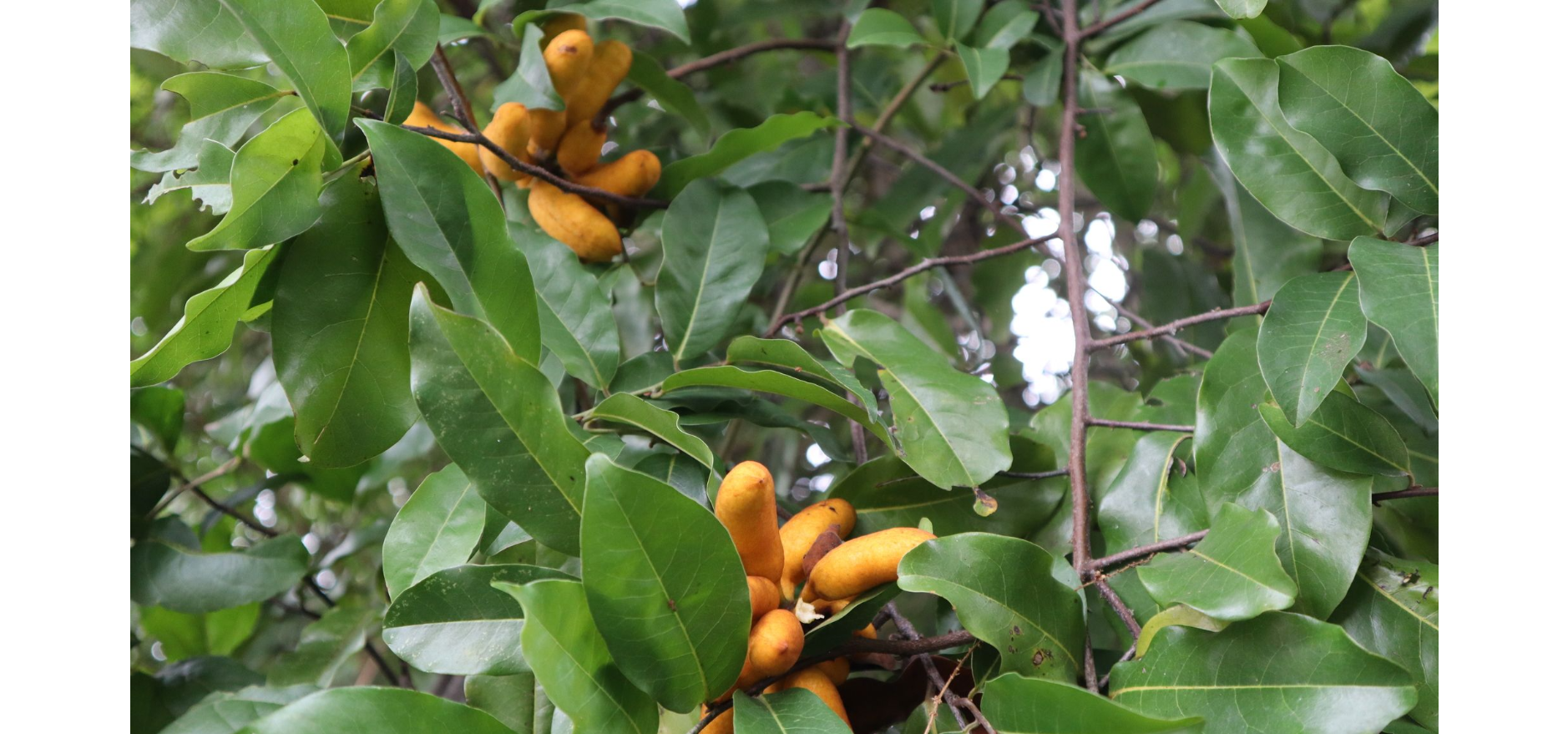Uvaria chamae

|
|||
Uvaria chamae Common Names: Finger Root, Bush Banana, Cluster Pear,
African Custard Apple Scientific
Classification Kingdom: Plantae Clade: Tracheophytes Clade: Angiosperms Clade: Magnoliids Order: Magnoliales Family: Annonaceae Genus: Uvaria Species: U. chamae Binomial Name: Uvaria chamae P.Beauv. Synonyms: Uvaria angolensis Welw. ex Oliv., Uvaria owariensis P.Beauv. Morphological Description Uvaria chamae,
commonly known as Finger Root or Bush Banana, is a climbing shrub or small
tree, typically 2–4 m tall, occasionally reaching 12 m with support. It is
characterized by: · Stems: Woody, twining, covered with fine, rust-colored hairs · Leaves: Ovate to elliptic, 10–20 cm long, 5–10 cm wide, dark green,
with a slightly pubescent underside · Flowers: Yellow-green to orange, 2–3 cm in diameter, fragrant, borne
in clusters from February to May · Fruit: Aggregate, finger-like, 2–5 cm long, green ripening to
yellow-orange, edible with a sweet-tart flavor Its clustered fruits
resemble small bananas, inspiring its common names (Orwa et al., 2009). Distribution and Habitat Uvaria chamae is
widely distributed across West and Central Africa, from Senegal to Angola,
including Nigeria, Benin, Côte d’Ivoire, Guinea, Togo, Ghana, and Cameroon. It
thrives in: · Habitats: Wet and dry forests, coastal scrublands, savannah woodlands,
and secondary growth areas · Climate: Tropical, with rainfall of 1,000–2,500 mm annually,
temperatures of 20–33°C · Soil Conditions: Well-drained loamy or sandy soils (pH
4.5–6.5), often in disturbed sites · Elevation: Sea level to 1,500 m Ethnopharmacology Uvaria chamae,
commonly known as bush banana or finger root, is a well-known medicinal plant
in West African traditional medicine, prized for its broad spectrum of
therapeutic properties. The roots, bark, and leaves are frequently used to
treat ailments such as malaria, fevers, diabetes, epilepsy, respiratory
infections, inflammatory conditions, and sexual dysfunction. It exhibits
antimicrobial, antimalarial, antioxidant, anti-inflammatory, analgesic, and
antidiabetic properties, which are supported by both traditional use and scientific
studies. Phytochemical analyses have identified the presence of alkaloids,
flavonoids, tannins, saponins, and terpenoids, which contribute to its
pharmacological effects. Uvaria chamae is especially valued for its potent
activity against Plasmodium falciparum, making it a key herb in herbal malaria
therapies. While its traditional use is widespread, further clinical research
is necessary to validate its efficacy, safety, and establish standardized
dosing protocols. · Antimalarial: Root extracts reduce *Plasmodium berghei* parasitemia in
mice (>70% at 900 mg/kg), used in Nigeria for malaria (Okokon et al., 2006). · Antibiotic: Ethanol root extracts inhibit *S. aureus* (MIC 6.25 mg/mL)
and *E. coli* (MIC 12.5 mg/mL), used in Benin for infections (Kone et al.,
2015). · Anti-inflammatory: Leaf extracts reduce inflammation in rats
(50% at 200 mg/kg), used in Ghana for rheumatism (Popoola et al., 2016). · Antioxidant: Root extracts show DPPH scavenging (IC₅₀ 4.02 µg/mL), used
in Côte d’Ivoire for oxidative stress (Thomas & Essien, 2020). · Hepatoprotective: Root bark protects against CCl₄-induced
liver damage in rats (ALT reduced by 40%), used in Nigeria for jaundice (Emordi
et al., 2016). · Gastrointestinal Treatment: Leaf decoctions treat dysentery in Burkina
Faso, with tannins reducing gut inflammation (Kone et al., 2015). ⚠ Toxicity Profile: No acute toxicity at traditional doses (LD₅₀
> 5,000 mg/kg in rats), but cytotoxic flavonoids (e.g., uvaretin) show LC₅₀
of 25 µg/mL in brine shrimp. High doses may cause liver or kidney stress;
supervised use is recommended (Thomas & Essien, 2020). Phytochemistry The plant’s therapeutic
properties are driven by a rich phytochemical profile: · Flavonoids: Uvaretin, isouvaretin, chamanetin, with antimicrobial and
cytotoxic effects · Tannins: Astringent compounds aiding gastrointestinal health · Essential Oils: Benzyl benzoate (23.3%), τ-cadinol
(12.1%), with antioxidant properties · Alkaloids: Contribute to antimalarial and analgesic effects · Phenolics: Support anti-inflammatory and hepatoprotective activities Additional Uses · Edible Uses: Fruits (high in vitamin C) eaten raw or juiced in Togo;
leaves used as a vegetable in Benin (Orwa et al., 2009) · Environmental Uses: Stabilizes soil in degraded areas;
supports pollinators with fragrant flowers · Industrial Uses: Roots and bark yield fibers for cordage in
Guinea · Cultural Uses: Used in Nigerian rituals for cleansing and fever relief References
External Links More Pictures
| Compounds of Uvaria chamae | ||
| References |